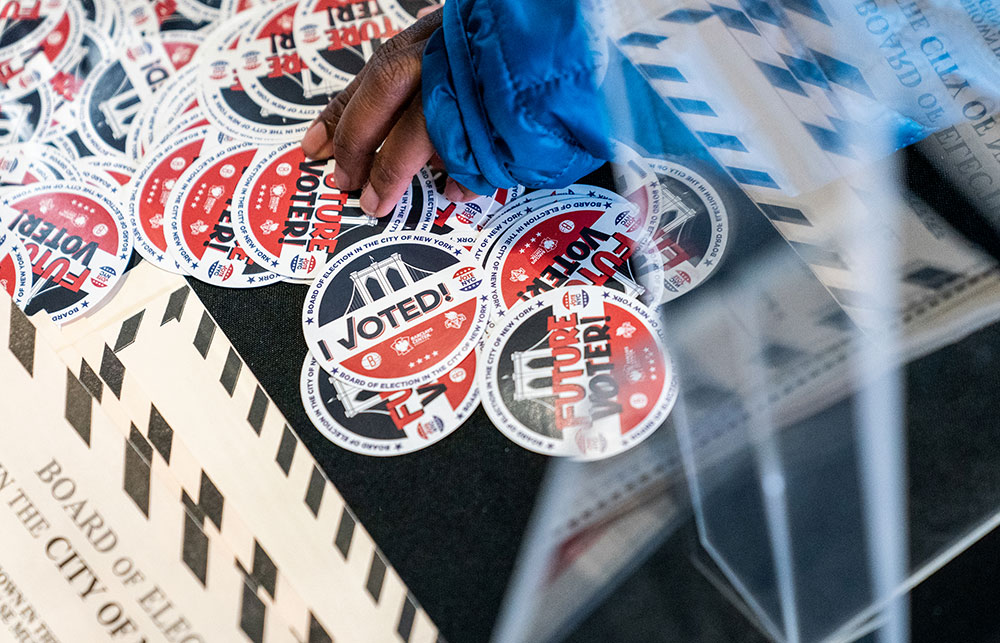
或许很多领导者会认为这种情况根本不切实际。但对许多政治高层人物和关注大选的专家们而言,这种情况并非完全没有可能发生。今年邮寄选票的数量远超过之前的选举,因此计票可能要延迟数周。邮寄选票更容易在法律上遭到质疑。计票过程中可能会发生大范围的市民骚乱和严重的经济混乱,甚至可能发生宪法危机。
你内心是否有一个声音在低声说道:“美国从来没有发生过选举灾难,所以这次也不会发生”?今年年初,你在读到有些文章里说需要为新冠肺炎演变成大流行做好准备时,是否也是同样的想法?
这正是绝大多数公司没有为疫情做好准备的原因。我们的大脑有一种严重低估低概率、高影响力破坏事件的倾向,这种倾向会带来灾难性的后果。你最近或许听说过这种事件被称为“黑天鹅事件”。
这种糟糕的倾向源于危险的判断错误,认知神经科学和行为经济学领域的研究人员将这种情况称为认知偏差。这些心理盲点会影响生活的方方面面,从健康到政治甚至购物都会受到影响。
我们之所以不能面对选举灾难可能发生的事实,罪魁祸首是三种认知偏差。
正常化偏差是指我们的大脑假设事情会像以往一样正常运行,并根据短期历史经验评估近期的未来情况。结果导致我们会明显低估严重破坏性事件的概率和影响,比如宪法危机。
另外一个主要问题是确认偏差,是指我们会严重倾向于只关注我们先前存在的信念和直觉,却对其他信息视而不见。比如发生选举灾难的可能性。
我们在制定计划的时候,会自然而然地相信未来一切都将按计划进行。这种判断错误的心理盲点,又称规划谬误,会导致我们没有为意外事件和问题做好充分准备。规划谬误尤其适用于选举灾难这种低概率、高影响力的黑天鹅事件。
解决这些认知偏差,需要用到概率思维。首先,为不同选举灾难情景设定一个概率。
邮寄选票有多大的概率因为法律上遭到质疑和国内冲突导致计票时间延长,比如至少延长到12月14日选举团投票之前?高层政治人物都在非常认真地不计成本为大选之后的计票冲突做准备,真正达到了史无前例的水平,因此我认为发生这种情况的概率不低于30%。
其次,选举团投票因为法律上的质疑而无法决定选举结果的概率是多少?或许只有上一种情况的一半,所以我们认为概率是15%。
这时候,必须由众议院决定总统人选。但两党都有办法让这个过程陷入僵局,可能演变成全面的宪法危机,无法达成明确的合法决议。我认为这种情况的概率是上一种情况的三分之二,即10%。
现在想象一下,假如国内冲突和法律上的质疑持续到选举团投票,未来会发生什么。作为公司的领导者,你会想到哪些问题,你又会如何解决这些问题?(我的公司Disaster Avoidance Experts会就如何为意外危机做准备等问题,向公司提供建议,因此本文中所列的下列建议可能让我本人受益。)
重新评估业务连续性计划:例如,大部分公司对新冠疫情的准备严重不足。如果你现在还没有全面推行虚拟办公,在可行的情况下,做好彻底改为虚拟办公的准备。如果无法执行虚拟办公,就要在可能发生国内冲突之前加强办公室的安全措施。
告诉员工发生选举灾难的极大可能性,并鼓励他们做好必要的准备。提醒员工公司可以通过员工援助项目等途径来帮助他们获得任何心理健康资源。针对许多员工的工作可能被严重干扰的情况做好准备;确保重要岗位始终有接受过交叉培训的员工作为后备力量,以防止意外发生。
如果你是制造商,认真研究你可能需要采取哪些措施来保护供应链安全。如果你是服务提供商,则应该向客户保证你会采取保护措施,以防止服务中断。
你需要多少资源解决潜在的问题?将你计算的数字加起来,再乘以30%。然后利用这些资源为可能出现的问题做好准备。
接下来要考虑如果选举团投票未能决定总统人选,并且混乱持续到明年1月初,你可能面临哪些问题以及你需要哪些资源。将这些资源乘以15%。最后,如果众议院的投票陷入僵局并爆发宪法危机,评估你可能面临的问题和需要的资源,并将这些资源乘以10%。
使用这种方法,你可以根据所选择的评估结果,针对不同概率制定计划和分配资源。这样做等同于为自己购买了一份防范选举灾难的保险。(财富中文网)
本文作者格列布·提珀斯基现任风险管理与策略咨询公司Disaster Avoidance Experts的首席执行官,并著有《永远不要相信直觉:开拓型领导者如何做出最佳决策并避免商业灾难》(Never Go With Your Gut: How Pioneering Leaders Make the Best Decisions and Avoid Business Disasters)一书。
翻译:刘进龙
审校:汪皓
或许很多领导者会认为这种情况根本不切实际。但对许多政治高层人物和关注大选的专家们而言,这种情况并非完全没有可能发生。今年邮寄选票的数量远超过之前的选举,因此计票可能要延迟数周。邮寄选票更容易在法律上遭到质疑。计票过程中可能会发生大范围的市民骚乱和严重的经济混乱,甚至可能发生宪法危机。
你内心是否有一个声音在低声说道:“美国从来没有发生过选举灾难,所以这次也不会发生”?今年年初,你在读到有些文章里说需要为新冠肺炎演变成大流行做好准备时,是否也是同样的想法?
这正是绝大多数公司没有为疫情做好准备的原因。我们的大脑有一种严重低估低概率、高影响力破坏事件的倾向,这种倾向会带来灾难性的后果。你最近或许听说过这种事件被称为“黑天鹅事件”。
这种糟糕的倾向源于危险的判断错误,认知神经科学和行为经济学领域的研究人员将这种情况称为认知偏差。这些心理盲点会影响生活的方方面面,从健康到政治甚至购物都会受到影响。
我们之所以不能面对选举灾难可能发生的事实,罪魁祸首是三种认知偏差。
正常化偏差是指我们的大脑假设事情会像以往一样正常运行,并根据短期历史经验评估近期的未来情况。结果导致我们会明显低估严重破坏性事件的概率和影响,比如宪法危机。
另外一个主要问题是确认偏差,是指我们会严重倾向于只关注我们先前存在的信念和直觉,却对其他信息视而不见。比如发生选举灾难的可能性。
我们在制定计划的时候,会自然而然地相信未来一切都将按计划进行。这种判断错误的心理盲点,又称规划谬误,会导致我们没有为意外事件和问题做好充分准备。规划谬误尤其适用于选举灾难这种低概率、高影响力的黑天鹅事件。
解决这些认知偏差,需要用到概率思维。首先,为不同选举灾难情景设定一个概率。
邮寄选票有多大的概率因为法律上遭到质疑和国内冲突导致计票时间延长,比如至少延长到12月14日选举团投票之前?高层政治人物都在非常认真地不计成本为大选之后的计票冲突做准备,真正达到了史无前例的水平,因此我认为发生这种情况的概率不低于30%。
其次,选举团投票因为法律上的质疑而无法决定选举结果的概率是多少?或许只有上一种情况的一半,所以我们认为概率是15%。
这时候,必须由众议院决定总统人选。但两党都有办法让这个过程陷入僵局,可能演变成全面的宪法危机,无法达成明确的合法决议。我认为这种情况的概率是上一种情况的三分之二,即10%。
现在想象一下,假如国内冲突和法律上的质疑持续到选举团投票,未来会发生什么。作为公司的领导者,你会想到哪些问题,你又会如何解决这些问题?(我的公司Disaster Avoidance Experts会就如何为意外危机做准备等问题,向公司提供建议,因此本文中所列的下列建议可能让我本人受益。)
重新评估业务连续性计划:例如,大部分公司对新冠疫情的准备严重不足。如果你现在还没有全面推行虚拟办公,在可行的情况下,做好彻底改为虚拟办公的准备。如果无法执行虚拟办公,就要在可能发生国内冲突之前加强办公室的安全措施。
告诉员工发生选举灾难的极大可能性,并鼓励他们做好必要的准备。提醒员工公司可以通过员工援助项目等途径来帮助他们获得任何心理健康资源。针对许多员工的工作可能被严重干扰的情况做好准备;确保重要岗位始终有接受过交叉培训的员工作为后备力量,以防止意外发生。
如果你是制造商,认真研究你可能需要采取哪些措施来保护供应链安全。如果你是服务提供商,则应该向客户保证你会采取保护措施,以防止服务中断。
你需要多少资源解决潜在的问题?将你计算的数字加起来,再乘以30%。然后利用这些资源为可能出现的问题做好准备。
接下来要考虑如果选举团投票未能决定总统人选,并且混乱持续到明年1月初,你可能面临哪些问题以及你需要哪些资源。将这些资源乘以15%。最后,如果众议院的投票陷入僵局并爆发宪法危机,评估你可能面临的问题和需要的资源,并将这些资源乘以10%。
使用这种方法,你可以根据所选择的评估结果,针对不同概率制定计划和分配资源。这样做等同于为自己购买了一份防范选举灾难的保险。(财富中文网)
本文作者格列布·提珀斯基现任风险管理与策略咨询公司Disaster Avoidance Experts的首席执行官,并著有《永远不要相信直觉:开拓型领导者如何做出最佳决策并避免商业灾难》(Never Go With Your Gut: How Pioneering Leaders Make the Best Decisions and Avoid Business Disasters)一书。
翻译:刘进龙
审校:汪皓
That possibility may sound unrealistic to many leaders. Yet it doesn’t sound so far-fetched to many top politicians and experts observing the run-up to the election. With many more mail-in ballots—which are much more vulnerable to legal challenges—than in previous elections, the counting might drag on for many weeks. It may well be accompanied by widespread civil disturbances, serious economic turmoil, and potentially a constitutional crisis.
Is a voice deep inside your gut whispering, “An election disaster has never happened before, and so it won’t happen now”? Maybe it’s the same voice you heard when reading articles at the beginning of this year about the need to prepare for COVID-19 turning into a pandemic?
That’s why the vast majority of companies weren’t prepared for the pandemic. Our brains have a disastrous tendency to underestimate greatly low-probability and high-impact disruptors, events you might have recently heard referred to as “black swans.”
This disastrous tendency comes from dangerous judgment errors that researchers in cognitive neuroscience and behavioral economics call cognitive biases. These mental blind spots impact all areas of our life, from health to politics to even shopping.
Three cognitive biases bear the biggest fault for our failure to face the truth about the possibility of an election disaster.
Normalcy bias refers to our brains assuming things will keep going as they have been—normally—and evaluate the near-term future based on our short-term past experience. As a result, we underestimate drastically both the likelihood and impact of a serious disruption, such as a constitutional crisis.
Another major problem, confirmation bias, describes our strong preference to look only for information that already supports our preexisting beliefs and gut feelings, and ignore data that doesn’t. That includes the possibility of a major election disaster.
When we make plans, we naturally believe that the future will go according to plan. That wrong-headed mental blind spot, the planning fallacy, results in us not preparing sufficiently for contingencies and problems. The planning fallacy applies especially black swan–type low-probability, high-impact events such as an election catastrophe.
To address these cognitive biases, you need to use probabilistic thinking. First, assign a probability to various election disaster scenarios.
What’s the probability that mail-in ballots will take a long time to be processed due to legal challenges and civil strife, say stretching at least until the Electoral College vote on Dec. 14? Given the serious, costly, and truly unprecedented preparations for the post-election counting battle by top politicians, I’d say no less than 30%.
After that, what’s the likelihood that the Electoral College vote will not be decisive due to legal challenges? Perhaps only half of that, so we’re at 15%.
At that point, the House of Representatives gets to decide the President. Yet both parties have ways of stalemating the process, potentially resulting in a full-blown constitutional crisis with no clear legal resolution. I’d put the likelihood of that at two-thirds of 15%, so 10%.
Now imagine what the future would look like if the civil strife and legal challenges lasted only through the Electoral College vote. What kind of problems might come up for you as a leader and how can you solve them? (My firm, Disaster Avoidance Experts, advises organizations on how to prepare for unexpected crises, and therefore I could benefit financially from organizations following the advice outlined in this article.)
Revisit your business continuity plan: The large majority of organizations were seriously underprepared for the pandemic, for example. If you’re not working all virtually now, prepare if at all possible to go to all-virtual work. If you can’t, get extra security for your office ahead of potential civil strife.
Let your employees know about the significant possibility of an election disaster, and encourage them to prepare themselves as needed. Remind them of any opportunities you provide for access to mental health resources, such as through an employee assistance program. Prepare your office for a number of your employees suffering a serious disruption in their work; make sure that the more important positions have employees cross-trained to provide backups just in case.
If you manufacture products, see where you might need to take steps to protect your supply chains. If you provide services, reassure your clients about the steps you will take to protect your services from interruptions.
How many resources would you require to address potential problems? Add them up, and multiply them by 30%. Then, go on to use those resources to prepare for this possibility.
Next, consider what problems you might face, and what resources you might need, if the Electoral College vote is indecisive, and this situation goes into early January. Multiple these resources by 15%. Finally, evaluate the problems and resources needed if the House voting ends in an impasse and a constitutional crisis, and multiply these by 10%.
Using this approach, you distribute your plans and resources across the different possibilities in accordance with your chosen evaluations. By doing so, you’re essentially buying insurance to protect yourself from an election disaster.
Gleb Tsipursky is CEO of the risk management and strategy consulting firm Disaster Avoidance Experts and author of Never Go With Your Gut: How Pioneering Leaders Make the Best Decisions and Avoid Business Disasters.






